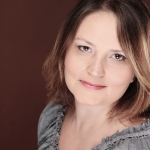From Information Model to DITA Project Structure
What is your process, when you start a new documentation project in DITA? How do you decide on the contents and by which magic does it turn into DITA topics and maps?
To develop effective, user-oriented information, you should invest most of your time in researching your audience and in task analysis, than in clicking New>File>Map, New>File>Topic and dragging topicrefs… For the DITA structure, if you define your project templates, you never have to start from scratch, nor fear that you wrote that perfect topic, but it got lost somewhere in the content pool, never finding its way into the ultimate ditamap after all.
If you think it’s difficult to transform an outline into a ditamap, to fit and tame all the topics in the intended structure, come and see how “model2project” becomes routine, so you can focus on the content.
What can attendees expect to learn?
New DITA writers often find it difficult to envision the transformation of the information outline to the actual DITA structure. Others don’t even have the habit of starting with an information model in the research phase of a project.
They feel more confident, once they are trained to follow a workflow that includes the research and modeling phase, and when they know they don’t have to start a new project from scratch every time. Their team should work with a set of project structures and templates, to ensure not only faster workflows, but also higher quality of the technical information.
The presentation shows the importance of the modeling phase in the writing workflow, as well as some methods and tools for translating the model into a DITA project structure.
Meet the Presenter
 Magda Caloian (@thinkDITA) is Information Architect, Consultant and DITA Trainer at PANTOPIX (Germany). Her work has a double focus: “I make it my mission to keep reminding writers that documentation has to be easy to find, easy to understand, easy to use; at the same time, I assist content writers and managers to discover and adopt the best author experience for their teams.” Her 14-year experience in technical communication, along with a BA in Management, an MSc in Project Management, and the tekom certification in Technical Documentation, shaped an interesting mix of expertise in structured documentation, DITA, and information systems implementation.
Magda Caloian (@thinkDITA) is Information Architect, Consultant and DITA Trainer at PANTOPIX (Germany). Her work has a double focus: “I make it my mission to keep reminding writers that documentation has to be easy to find, easy to understand, easy to use; at the same time, I assist content writers and managers to discover and adopt the best author experience for their teams.” Her 14-year experience in technical communication, along with a BA in Management, an MSc in Project Management, and the tekom certification in Technical Documentation, shaped an interesting mix of expertise in structured documentation, DITA, and information systems implementation.
